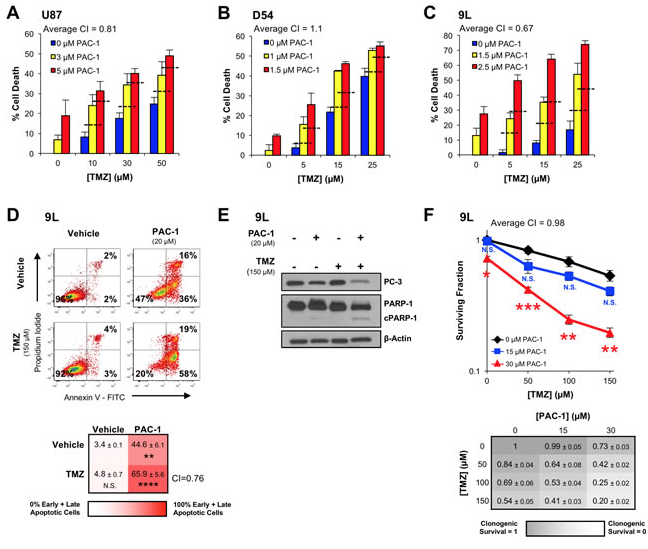Behind the Study: Extending Survival in Glioma Models
Oncotarget, Spotlight
May 11, 2021Behind the Study is a series of transcribed videos from researchers elaborating on their recent oncology-focused studies published by Oncotarget. A new Behind the Study is released each Monday. Visit the Oncotarget YouTube channel for more insights from outstanding authors.
—
Dr. Gregory Riggins from Johns Hopkins University discusses his 2017 study published by Oncotarget, entitled, “Synergistic and targeted therapy with a procaspase-3 activator and temozolomide extends survival in glioma rodent models and is feasible for the treatment of canine malignant glioma patients.”
Speaker
Welcome to the Oncotarget YouTube channel. This interview is with Dr. Gregory Riggins in the Department of Neurosurgery School of Medicine, Johns Hopkins University in Baltimore, Maryland. They’re talking about their manuscript, published in Oncotarget titled “Synergistic and targeted therapy with a procaspase-3 activator and temozolomide extend survival in glioma rodent models and is feasible for the treatment of canine malignant glioma patients.”
Dr. Gregory Riggins
Hi, my name is Greg Riggins, and I’m a Professor of Neurosurgery and Oncology at Johns Hopkins University School of Medicine. I run a laboratory that works on translational research, trying to develop new therapies for brain cancer. And our latest work is in collaboration with Paul Hergenrother and Timothy Fan at University of Illinois at Urbana Champagne, where we looked at this new drug that was developed by Paul and his group, a procaspase-3 activating compound. And the title of our paper is “Synergistic and targeted therapy with a procaspase-3 activator and temozolomide extend survival in rodent glioma models and is feasible for the treatment of canine malignant glioma patients.”
So this work with the procaspase-3 activating compound or PAC-1 started several years ago when we saw a paper from Paul Hergenrother that he had developed a new procaspase-3 activating compound that looked very promising. It’s a first-in-class drug. It cleaves procaspase-3 to activate caspase-3, and that’s in the executioner phase, and it is less likely to have drug resistance because it’s at the end of the apoptosis cascade.
A talented post-doctoral fellow in the laboratory Avadhut Joshi saw that this drug got into the brain. In fact, the first publication from Paul suggested that this drug should be reformulated because it gets into the brain and they were trying to avoid any side effects from having the drug enter the CNS.

We work on glioblastomas, which is a very challenging cancer of the brain. It’s one of the most lethal of the brain tumors, and we want drugs to get into the brain. In fact, that’s half the challenge for developing new chemotherapies is getting the chemotherapy into the brain in sufficient concentrations. So we requested the drug, we formed the collaboration, and we’ve worked on this for years, looking at rodents, and then Paul’s group has also studied this exclusively.
And as reported in this paper, in dogs that have spontaneous brain tumors and their owners bring them in, their companion canines, and we’ve tested the combination of PAC-1 and temozolomide to show that it’s feasible in these large animals to treat glioblastomas.
This has been exciting work for us. It has led to a phase one clinical trial that is now at the University of Illinois and at Johns Hopkins here in Baltimore, where we’re looking at both the safety in metastatic tumors and then now in glioblastomas. One of the aspects of this work is that we show that it works in combination with temozolomide, which is an outcome alkylating agent, it damages the DNA, and it helps trigger apoptosis. And it is synergistic with PAC-1. When used together, they form a improved response, at least in the animals, and we are hoping that we will get along far enough that we can show the synergistic response in glioblastoma patients.
So our next steps are to complete this safety trial on PAC-1 and that has reached some of its important objectives already where we’ve shown that we can move up safely in dosing. And we are now moving on to the phase where we can combine PAC-1 with temozolomide for glioblastoma patients.
—
Oncotarget is a unique platform designed to house scientific studies in a journal format that is available for anyone to read—without a paywall making access more difficult. This means information that has the potential to benefit our societies from the inside out can be shared with friends, neighbors, colleagues and other researchers, far and wide.

For media inquiries, please contact media@impactjournals.com.

